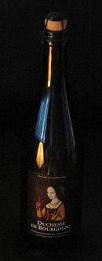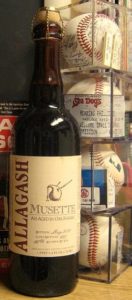The last Thursday of April. Didn’t we just start March five minutes ago? I’d love to know whose life is dragging these days because mine is flying by. Taxes last weekend (first draft and executive decisions.) Taxes next weekend (final draft, resignation and despair.) What has that got to do with good beer culture? Well, for one thing, it’s been a week of fairly bad news which is not really having an effect but only in the sense that so few people are paying attention anymore. I try to be so damn cheery these weeks… but this one is going to be a bit of a study in shades of grey.
First, and as noted just too weeks ago, any idea that Canada will soon have free inter-provincial trade in booze can only be based on a fundamental misunderstanding of our constitution, a misunderstanding which is apparently shared by our hobbyist Prime Minister:
Prime Minister Justin Trudeau said this year’s budget bill does what the Harper government could never do over ten years in office — it “frees the beer.” There’s just one problem with that claim: only the provinces can free the beer (or wine, or spirits). And most of them haven’t — including Premier Doug Ford’s Ontario, despite his government’s first budget being otherwise loaded with booze liberalization measures… “Unfortunately, in the parliamentary system that we have … we still have to struggle province by province.”
Speaking of disastrous misunderstandings of law, apparently the policy decision to place beer and other boozy treats in the corner stores of Ontario could cost us all $1,000,000,000 to get out of the relatively recent 2015 deal that kept beer and other boozy treats in the corner stores of Ontario. Quietly arranged without public input, the current deal locked in something for another decade – the vested right of big brewers to continue to leverage the decades-old interesting combo of a monopoly married to a cooperative to make heaps of dough. Who would give that up? No one.
In other gross misunderstanding news, Max has published a follow up on Joe Stange’s piece on the brand new used BrewDog brewery in Berlin. Go read both:
Though there’s no doubt that the delays and unexpected costs contributed its ultimate fate (and I sympathise Koch’s frustration with the builders), I believe that, even if everything had gone according to plan (which hardly ever does), the enterprise was doomed for the simple reason that it had arrived way too late. Let me explain.
What I don’t get is the idea that there was “frustration with the builders” at all. I do planning on construction projects on the owner’s side, sometimes a few times the value of this project and consulting project managers are always part of the planning process. And they carry errors and omissions insurance. Odd. And no one has contacted anyone in on the site other than the owner. Did not one beer journalist think to check with the construction company or the local permit issuing authorities to corroborate? Very odd. But who am I to say?
Similarly, big news for old big craft out of Pennsylvania as venerable craft cornerstone Weyerbacher is disappearing as we know it according to the reliably reliable (and far less drama-ridden than GBH) Brewbound:
Speaking to Brewbound, newly named president Josh Lampe, who previously served as chief operating officer and has supplanted brewery founder Dan Weirback as the company’s leader, said 1518 Holdings had acquired a 55 percent stake in the 24-year-old business… In addition to the new investment, the Easton, Pennsylvania-based craft brewery has also filed for Chapter 11 bankruptcy in an effort to restructure its debt. In a press release, Lampe said 1518 Holdings believed the bankruptcy filing “was necessary in order to move forward quickly.”
I used to hunt our a few Weyerbacher ales over a decade ago, barrel aged things that were so smokey rich I swear I was drinking BBQ sauce. Insanity, Prophecy, Blasphemy all got reviews in the summer of 2007. So long ago, I called them oaked ales and not barrel aged. Then I lost interest in +/- 10% massive ales. Then a decade passes. Then the brewery ends up in bankruptcy. And now I am 56.
Keeping up the theme that things are on the move, I repost myself. In a comment at Stan’s I wrote how, while I can no longer distinguish between whether something is nonsense or that I just no longer care, I found this observation is weirdly interesting from the rebuttal to PKW thoughts on the BA no longer being on the right track:
Despite its flaws, the BA does present a threat to the capitalist paradigm that is bolstered by the current administration, and that is exactly what the economy and beer industry need in order to prevent corporatocracy and monopoly under the guise of a diverse portfolio.
Does anyone actually think this? As I wrote, I have never equated any brewing with anything but something stoking a capitalist agenda. Or, you know, they go all Wayerbacher. Brewing is one of the classic examples of the capitalist construct whether in its multi-national form or the mom and pop. If anyone believes that the BA is working otherwise has to have been operating under at least a profound willful blindness for the last decade of irrational exuberance over market share stats.
Perhaps related, The Guardian has reported on the stalling of UK craft’s expansion:
Five years ago the sector was still in its “gold rush” stage, which made it easier for new brewers to start up and quickly gain market share, according to the research from the national accountancy group UHY Hacker Young. But with the industry maturing, it is now much harder for startups to gain a foothold as multinational brewers buy and invest in existing craft and artisan breweries, the group says. “We’re not saying that the market is shrinking, just the number of players is consolidating and sales growth is going to be harder to come by,” said James Simmonds, a partner at UHY Hacker Young
With eight new breweries opening in the UK in the last year compared to 390 in the year prior to that, well, it’s obvious that something has changed – but is anyone paying attention and considering the implications? Pete, interestingly and perhaps applying the same techniques beer writers use to consider the health implications of alcohol, has disputed the same figures as published in the Morning Advertiser, asking “why are people so keen to see the demise of the craft boom?“* More misunderstanding! I’d be more upset at perhaps the worst selection of a verb within a very short sentence including a quotation:
“Sales growth is going to be harder to come by,” exclaimed Simmonds.
Exclaimed! Of course, we are living with a core of writers who are keen to see and posit upon nothing but a perpetual craft boom so there is a likelihood for a disappointment. And it doesn’t mean that good beer is any less popular but, as Boak and Bailey noted last weekend, international craft beer “is a parallel dimension, clearly signposted, and easily avoided.” Is it perhaps time to say (like JFK did when declaring himself a doughnut half a century ago) that in a way we are all now Berliners? That craft beer in one sense is becoming too easily avoided?
Want to trigger fanboy unhappiness, mention something good in the LA Times Official Domestic Beer Power Rankings… like now finding myself attracted to this description of top ranking entry Busch Light:
Busch is so named because of the company that owns it. Anheuser-Busch InBev, with almost $55 billion in revenue in 2018, owns so many beer companies. In addition to all the Budweiser brands, they also have Corona, Michelob, Stella Artois, Beck’s, Rolling Rock and dozens of smaller brands. Ever wonder why a lot of your beers sort of taste the same? Busch Light is actually an outlier, though, in that it tastes like nothing at all. I literally wrote down “no tasting notes.” It doesn’t taste like anything. It tastes like Arrowhead water. It is refreshing, though!
I now want to try something with no taste. It’s not possibly possible, is it? Everything has some taste. Note also that according to 2007, back in my Weyerbacher years, all these beers were supposed to be dead in 2014 or so… yet they live on just as before. How many of the top craft breweries on 2007 can we say that about, that they live on just as before?
Finally, Ron has triggered a conversation which seems to have gone on to touch all the bases of craft fan unhappiness over his choice of recreation brewing partners. [Why do people over 14 years old even bother typing “haters gonna hate“?] Jeff linked to the 20 minute long backgrounder YouTube story of the Goose Island recreation of an early Victorian porter so, you know, now I don’t have to. I just hope Ron got paid a lot. At least more than producing the YouTube video.
Well, that is it. A weirdly ungleeful week. And it’s not just me. No bubble bursting with a bang. More like the whimper. Who stands for the cause these days? Who waves the banner for international big bulk craft proudly?? Hello? Anyone??? Hmm. Surely, someone can explain it all. Boak and Bailey on Saturday and Stan on Monday? We will have to wait to find out. Well, wait and finish those tax forms.
*This week alone, I might offer Stone and Weyerbacher but that would be a fact-based reality-based observation.


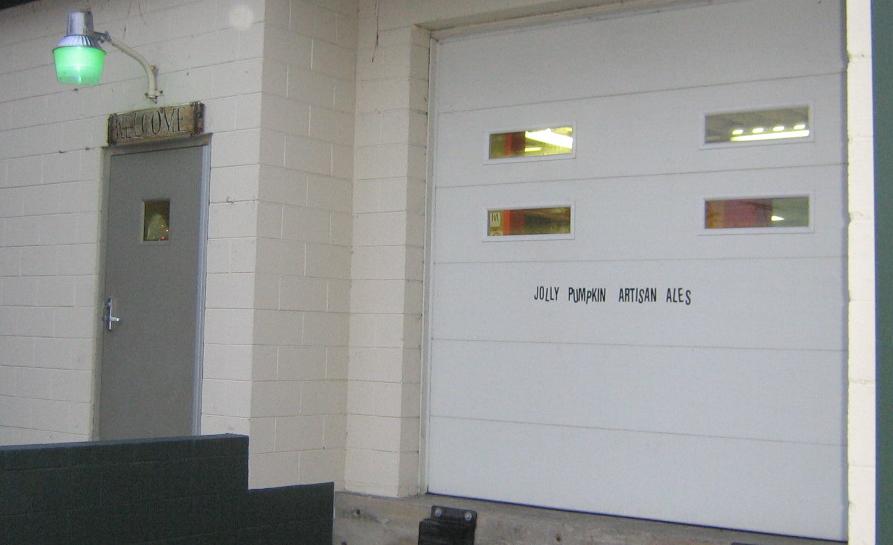
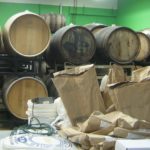
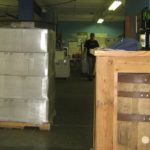


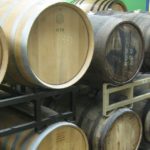
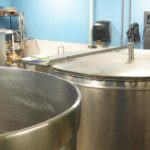
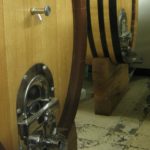
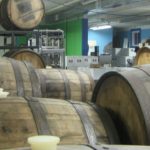
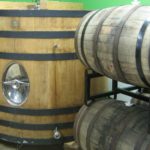
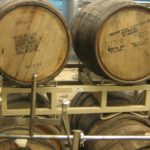

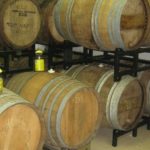
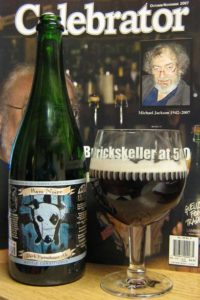
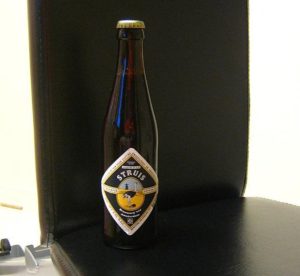 I have a sticker on my hand that says “$6.20” and on my desk I have a 330 ml bottle of Struis. In the US, that price gets the best part of a decent six pack of craft beer. In Ontario, it gets you half a six of Unibroue’s
I have a sticker on my hand that says “$6.20” and on my desk I have a 330 ml bottle of Struis. In the US, that price gets the best part of a decent six pack of craft beer. In Ontario, it gets you half a six of Unibroue’s 